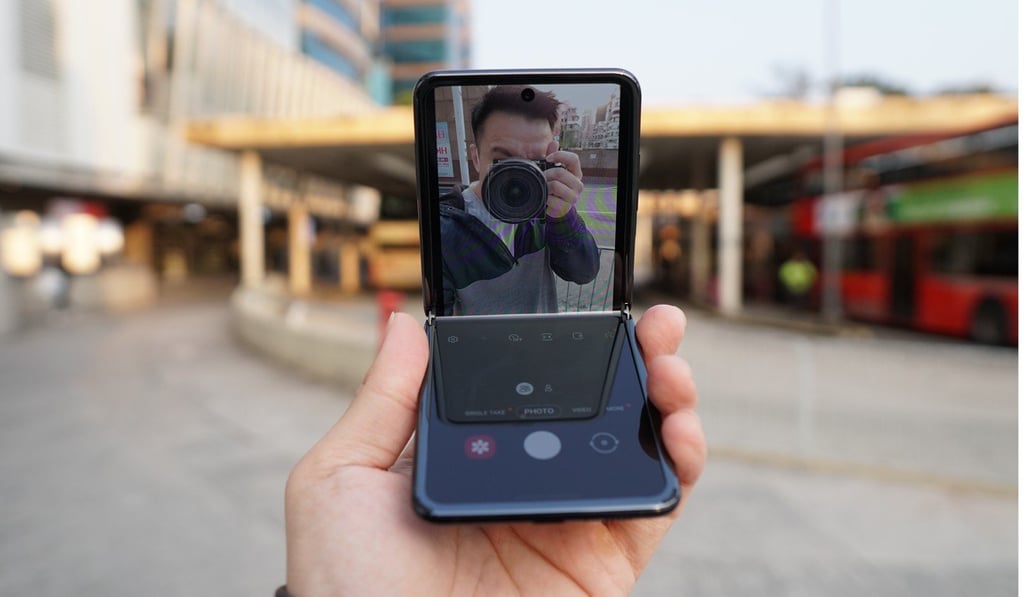Review | Samsung Galaxy Z Flip review: a very compact phone when folded, but the 1.1 inch screen is just too small
- The second folding phone from Samsung is more refined, with a better hinge, and improved navigation and animations
- However, when folded, the 1.1-inch screen isn’t very functional, and the cameras are from last year

If Samsung’s first foldable phone, the Galaxy Fold, was a bleeding edge luxury device meant for the most hard core of tech enthusiasts, then the South Korean tech giant’s second foldable offering, the Galaxy Z Flip, is a more refined product meant for the masses.
Hardware and design
The Z Flip has a form factor that anyone who used mobile phones in the late 1990s will find familiar: it’s a clamshell handset that flips open vertically.
Back then, the flip revealed a tiny screen on the top half and a physical dial pad on the bottom; with this handset, it reveals a single 6.7-inch bendable OLED screen. Colours and viewing angles on this OLED panel are excellent, but maximum brightness is around 600 nits, which is dimmer than the screens on Samsung’s normal phones. Outdoor visibility will be a slight issue if it’s a sunny day with no shade.
